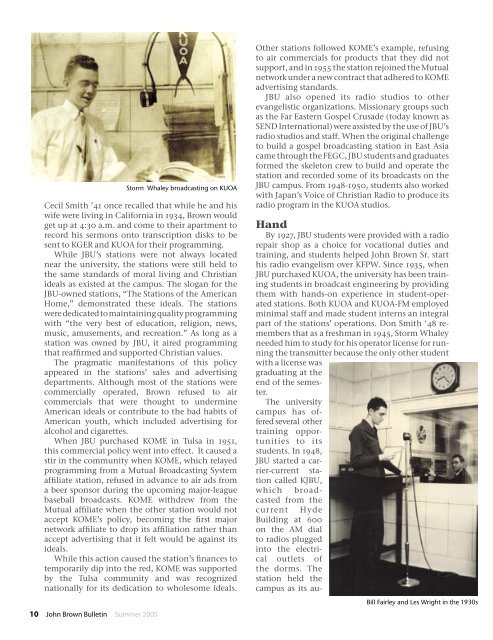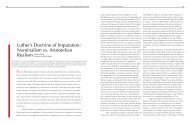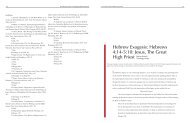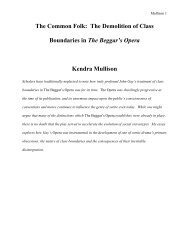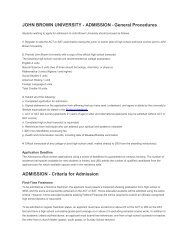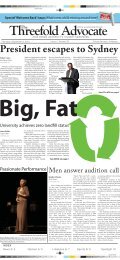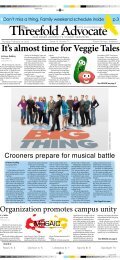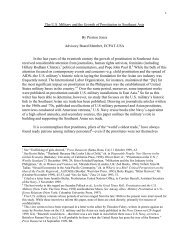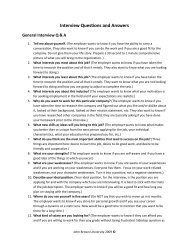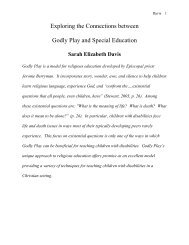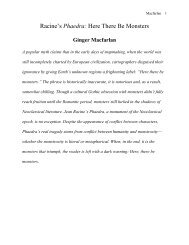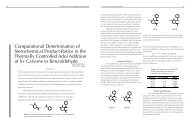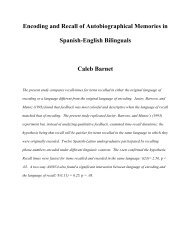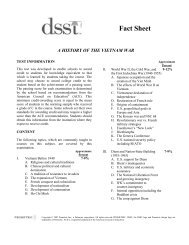Summer 2005 - John Brown University
Summer 2005 - John Brown University
Summer 2005 - John Brown University
- No tags were found...
Create successful ePaper yourself
Turn your PDF publications into a flip-book with our unique Google optimized e-Paper software.
Cecil Smith ’41 once recalled that while he and hiswife were living in California in 1934, <strong>Brown</strong> wouldget up at 4:30 a.m. and come to their apartment torecord his sermons onto transcription disks to besent to KGER and KUOA for their programming.While JBU’s stations were not always locatednear the university, the stations were still held tothe same standards of moral living and Christianideals as existed at the campus. The slogan for theJBU-owned stations, “The Stations of the AmericanHome,” demonstrated these ideals. The stationswere dedicated to maintaining quality programmingwith “the very best of education, religion, news,music, amusements, and recreation.” As long as astation was owned by JBU, it aired programmingthat reaffirmed and supported Christian values.The pragmatic manifestations of this policyappeared in the stations’ sales and advertisingdepartments. Although most of the stations werecommercially operated, <strong>Brown</strong> refused to aircommercials that were thought to undermineAmerican ideals or contribute to the bad habits ofAmerican youth, which included advertising foralcohol and cigarettes.When JBU purchased KOME in Tulsa in 1951,this commercial policy went into effect. It caused astir in the community when KOME, which relayedprogramming from a Mutual Broadcasting Systemaffiliate station, refused in advance to air ads froma beer sponsor during the upcoming major-leaguebaseball broadcasts. KOME withdrew from theMutual affiliate when the other station would notaccept KOME’s policy, becoming the first majornetwork affiliate to drop its affiliation rather thanaccept advertising that it felt would be against itsideals.While this action caused the station’s finances totemporarily dip into the red, KOME was supportedby the Tulsa community and was recognizednationally for its dedication to wholesome ideals.10 <strong>John</strong> <strong>Brown</strong> Bulletin <strong>Summer</strong> <strong>2005</strong>Storm Whaley broadcasting on KUOAOther stations followed KOME’s example, refusingto air commercials for products that they did notsupport, and in 1955 the station rejoined the Mutualnetwork under a new contract that adhered to KOMEadvertising standards.JBU also opened its radio studios to otherevangelistic organizations. Missionary groups suchas the Far Eastern Gospel Crusade (today known asSEND International) were assisted by the use of JBU’sradio studios and staff. When the original challengeto build a gospel broadcasting station in East Asiacame through the FEGC, JBU students and graduatesformed the skeleton crew to build and operate thestation and recorded some of its broadcasts on theJBU campus. From 1948-1950, students also workedwith Japan’s Voice of Christian Radio to produce itsradio program in the KUOA studios.HandBy 1927, JBU students were provided with a radiorepair shop as a choice for vocational duties andtraining, and students helped <strong>John</strong> <strong>Brown</strong> Sr. starthis radio evangelism over KFPW. Since 1935, whenJBU purchased KUOA, the university has been trainingstudents in broadcast engineering by providingthem with hands-on experience in student-operatedstations. Both KUOA and KUOA-FM employedminimal staff and made student interns an integralpart of the stations’ operations. Don Smith ‘48 remembersthat as a freshman in 1945, Storm Whaleyneeded him to study for his operator license for runningthe transmitter because the only other studentwith a license wasgraduating at theend of the semester.The universitycampus has offeredseveral othertraining opportunitiesto itsstudents. In 1948,JBU started a carrier-currentstationcalled KJBU,which broadcastedfrom thecurrent HydeBuilding at 600on the AM dialto radios pluggedinto the electricaloutlets ofthe dorms. Thestation held thecampus as its au-Bill Fairley and Les Wright in the 1930s


